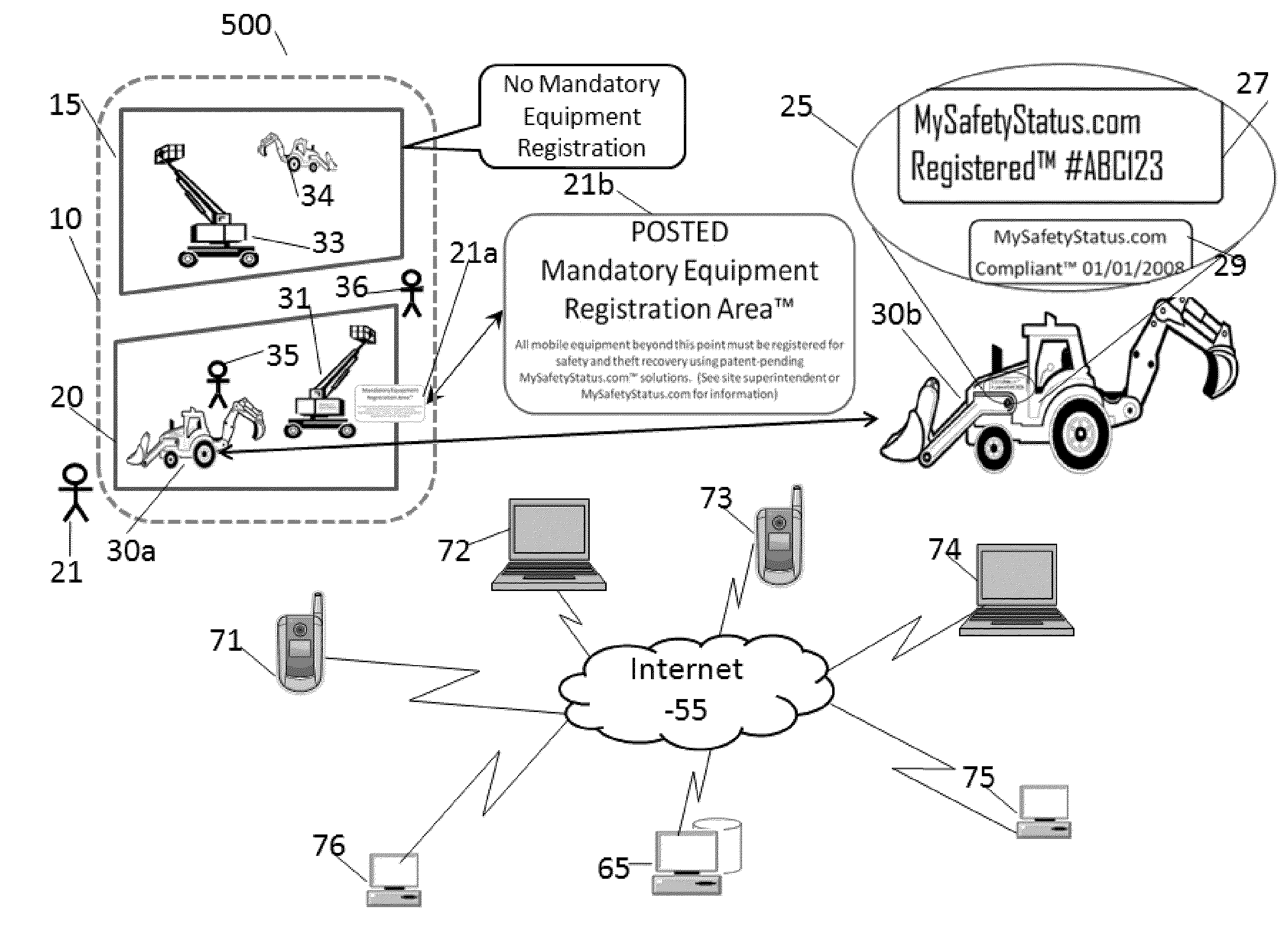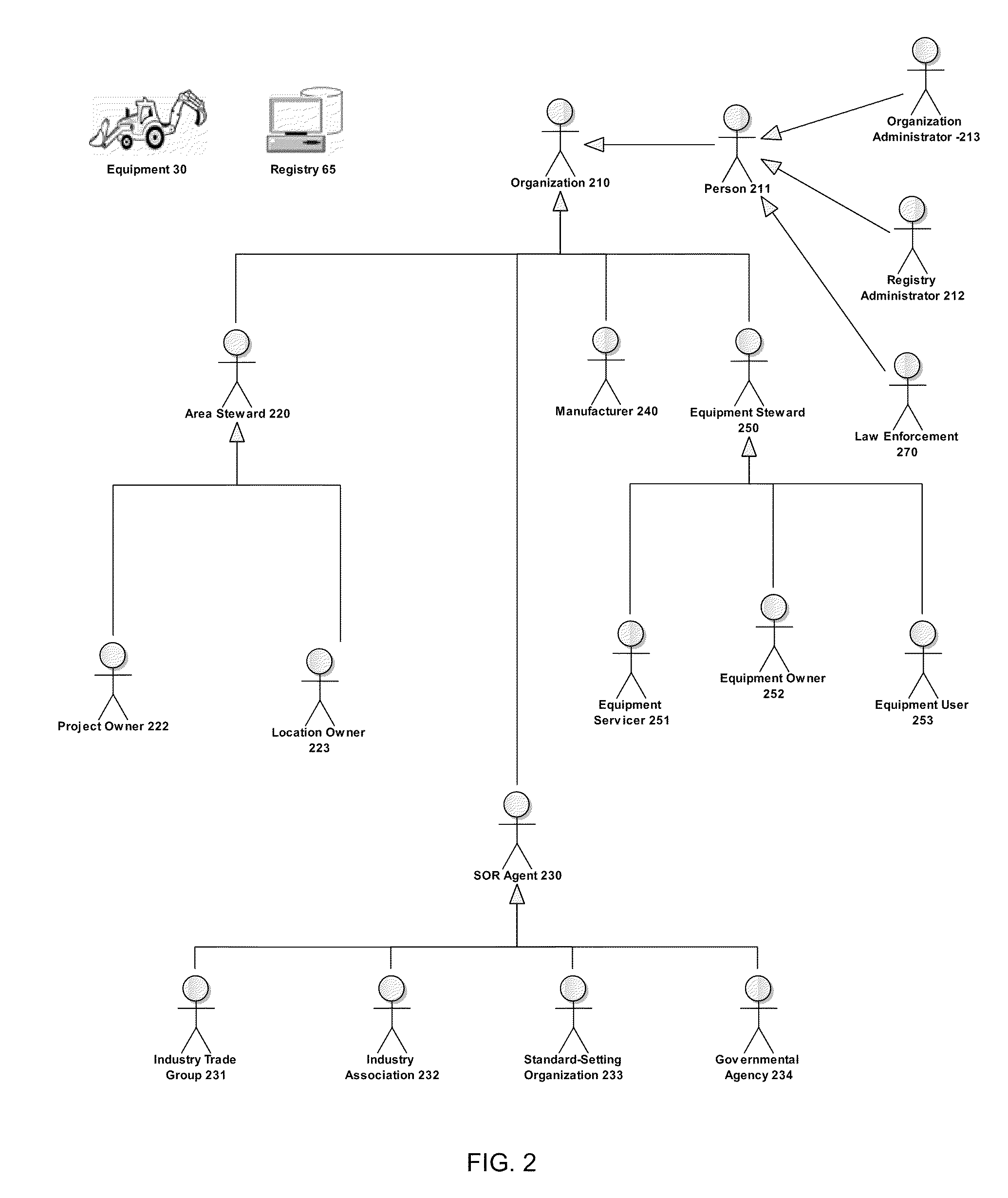Systems, methods, and media for industry resource management and contract management
a technology of applied in the field of systems, methods, media for industry resource management and contract management, can solve the problems of theft of mobile or off-road construction, industrial and related equipment, generators, etc., and achieve the effect of improving performance, improving resource allocation and improving performan
- Summary
- Abstract
- Description
- Claims
- Application Information
AI Technical Summary
Benefits of technology
Problems solved by technology
Method used
Image
Examples
example 1
[0090]FIG. 1 provides a high-level context diagram of an equipment monitoring system 500. The system includes an area 20 and an area 15 located within a geographic area 10. While the areas and geographic areas are not themselves part of the system, data representations of the areas can be included. Area 20 requires registration of equipment entering the area, while area 15 does not. The system can include additional areas and geographical areas not shown.
[0091]The system also includes data representations of a plurality of equipment units of which four of the equipment units are depicted as examples: a first equipment unit 30a, a second equipment unit 31 within the area 20, a third equipment unit 33, and a fourth equipment unit 34 within the area 15.
[0092]First equipment unit 30a is also represented as an enlargement 30b that shows an enlarged inlay 25. The inlay 25 depicts a registration decal 27 on the first equipment unit 30a. In one embodiment, the registration decal 27 serves a...
example 2
[0112]Aspects of the subject invention will next be described by reference to Unified Modeling Language (UML) diagrams. UML diagrams provide a means to model business requirements and / or design of a particular system. Three different types of UML diagrams (use case, activity, and class) are commonly used. Use case diagrams are commonly used in system analysis to identify, clarify, and organize system requirements. An activity diagram is a multi-purpose flow diagram that enables one to model business workflow and the behavior of system components. Class diagrams define the structure and relationships of objects in a business model.
[0113]FIG. 2 illustrates an actor relationship use case diagram that shows relationships between various entities (e.g., organizations, organizational roles, and people) and objects (e.g., computer systems and equipment) that can interact according to the subject invention. A context-appropriate symbol is used to represent something that interacts with a pa...
example 3
[0122]FIG. 3 illustrates a UML use case diagram, according to the subject invention. The diagram provides a graphics description of who or what initiates or triggers each major process. Use cases are represented by an oval containing its name. Lines connect use cases with actors or other use cases that initiate or trigger them.
[0123]In one embodiment, an organization 210 provides organization registry information through a register organization process 300. The organization registry information can include, for example, an organization's name, contact information such as address, telephone number(s), e-mail address(es), and unique identifiers such a tax identification numbers or a Dun and Bradstreet number. In one embodiment, the registry 65 also generates its own unique identification number for each organization 210 and establishes security to control access and modification rights to the organization information. In one embodiment, the organization 210 establishes, through the re...
PUM
 Login to View More
Login to View More Abstract
Description
Claims
Application Information
 Login to View More
Login to View More - R&D
- Intellectual Property
- Life Sciences
- Materials
- Tech Scout
- Unparalleled Data Quality
- Higher Quality Content
- 60% Fewer Hallucinations
Browse by: Latest US Patents, China's latest patents, Technical Efficacy Thesaurus, Application Domain, Technology Topic, Popular Technical Reports.
© 2025 PatSnap. All rights reserved.Legal|Privacy policy|Modern Slavery Act Transparency Statement|Sitemap|About US| Contact US: help@patsnap.com



